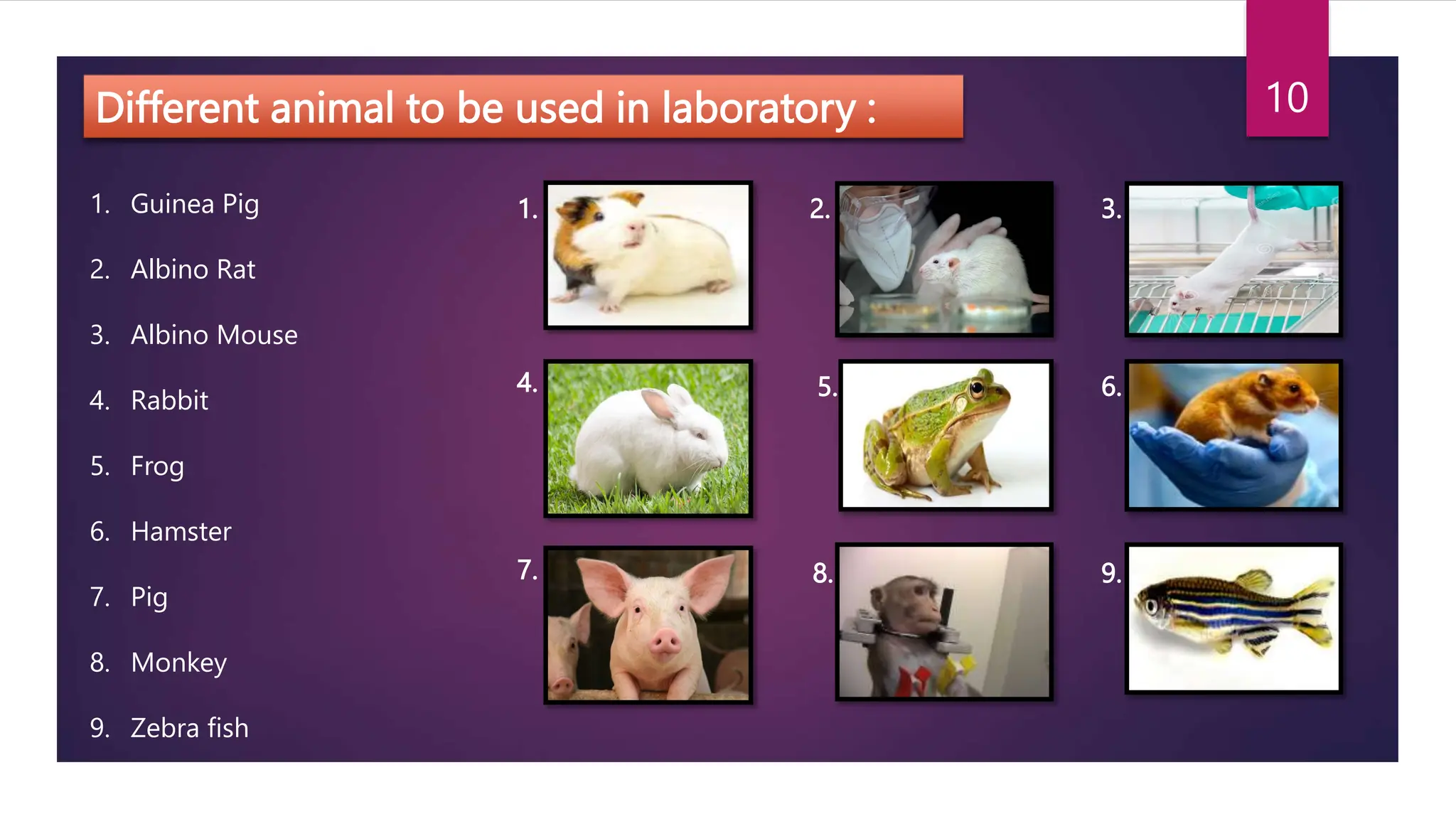The document presents a seminar on pharmacology laboratory animals, emphasizing their importance in drug discovery and research. It details guidelines from the CPCSEA and IAEC for ethical handling and experimentation on various animal models. The seminar concludes by recognizing the role of laboratory animals in scientific advancements and the necessity of adhering to ethical research practices.




















